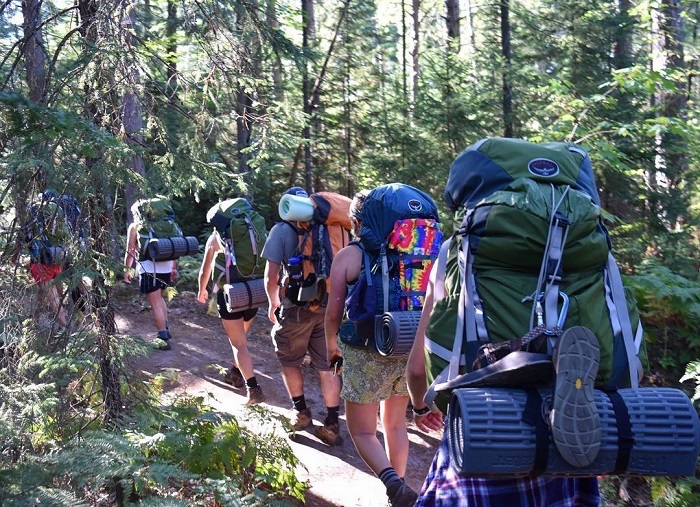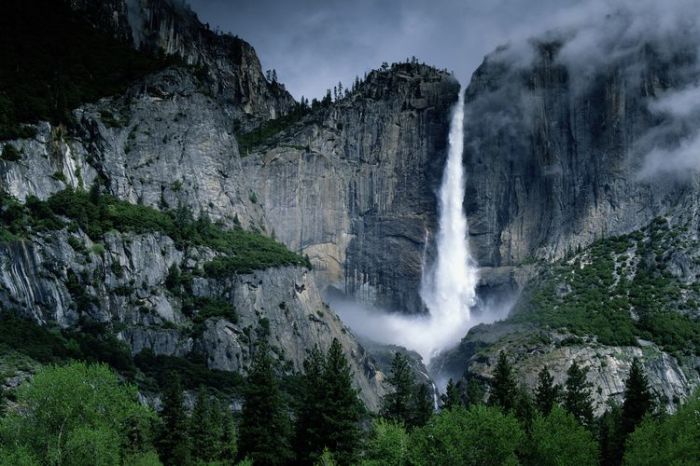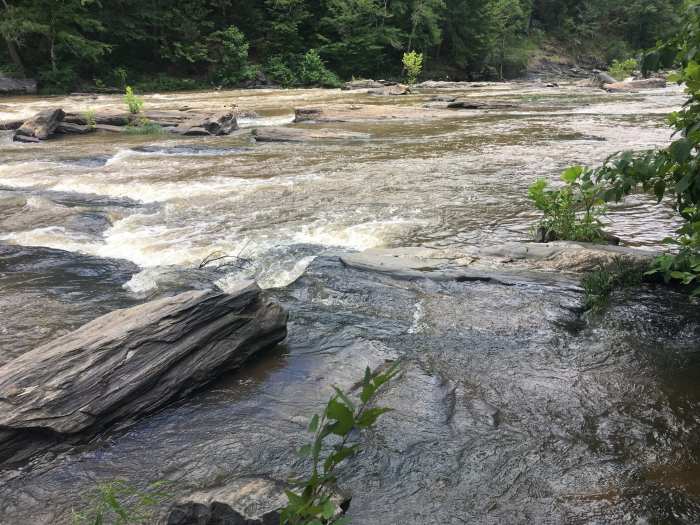Places to go hiking near me: Uncover hidden gems and breathtaking vistas just a short drive from your doorstep. Discover the thrill of exploring nearby trails, from gentle strolls to challenging ascents. This guide provides detailed information on local hiking areas, trail descriptions, essential safety tips, and helpful resources to make your next outdoor adventure unforgettable.
Whether you’re an experienced hiker or a beginner, finding the perfect trail near you can be a rewarding experience. This comprehensive guide simplifies the process, offering practical advice and detailed descriptions of various hiking spots. From popular parks to secluded nature reserves, you’ll find the perfect place to connect with nature.
Exploring Nearby Hiking Trails
Finding the perfect hiking trail near you is a rewarding quest. Whether seeking a challenging ascent, a leisurely stroll, or a scenic vista, the options abound. This exploration reveals the benefits of venturing into the local wilderness, and provides practical strategies to discover your ideal hiking destination. Discovering nearby hiking trails not only provides physical and mental well-being, but also connects you with your community and environment.The pursuit of local hiking destinations is increasingly important.
With the growing demand for outdoor recreation and the desire to connect with nature, discovering these gems within easy reach is paramount. Beyond the personal satisfaction, these trails contribute to a healthier community, fostering a deeper appreciation for local ecosystems. By utilizing the readily available information, you can navigate the vast network of trails and discover your own hidden hiking paradise.
Finding Your Ideal Hiking Spot
Discovering the best hiking spots near you requires a strategic approach. Thorough research, coupled with practical considerations, ensures a safe and enjoyable experience. A careful evaluation of trail difficulty, distance, and terrain is essential for planning.
Essential Factors for Choosing a Trail
Understanding the key elements that define a suitable hike is crucial. This includes assessing the trail’s length, the elevation gain, and the overall difficulty. Understanding the terrain, including potential hazards, is paramount to ensure a safe and fulfilling experience.
- Trail Length: Evaluating the trail’s distance is essential for determining the time commitment required. Short trails offer a quick escape, while longer options provide opportunities for extended exploration. Consider your available time and fitness level when making your choice.
- Elevation Gain: The vertical ascent plays a significant role in the overall challenge of the hike. Assess your physical capabilities and choose a trail that aligns with your fitness level. Higher elevation gains typically result in more challenging hikes, but also offer breathtaking vistas.
- Trail Difficulty: Assessing the difficulty of the trail is paramount to a safe and enjoyable experience. Different trails cater to various skill levels. Choosing a trail that matches your experience ensures a positive outcome.
- Terrain: Understanding the terrain is critical to safety and enjoyment. Factors such as rocky sections, steep inclines, or muddy patches can impact the hike. Appropriate footwear and clothing are essential for navigating varying terrains.
Utilizing Online Resources
Leveraging online resources provides a wealth of information about local hiking destinations. Detailed maps, trail descriptions, and user reviews offer invaluable insights. This ensures a well-informed decision-making process.
- Online Hiking Maps: Many websites and mobile applications provide comprehensive hiking maps, showcasing trail networks, elevation profiles, and other relevant details. These maps are invaluable for planning routes and gaining a visual understanding of the terrain.
- User Reviews and Ratings: User reviews and ratings offer valuable insights into the experiences of other hikers. These perspectives provide practical information on trail conditions, difficulty, and overall enjoyment.
- Local Hiking Groups: Engaging with local hiking groups can offer valuable insights and recommendations. Connecting with experienced hikers can lead to uncovering hidden gems and obtaining firsthand accounts of different trails.
Safety Considerations
Prioritizing safety is paramount when embarking on a hiking adventure. Comprehensive preparation and awareness of potential hazards are crucial. This includes carrying appropriate supplies and communicating your plans.
- Inform Someone of Your Plans: Sharing your hiking itinerary with a friend or family member is crucial for safety. This allows someone to be aware of your whereabouts and provides a point of contact in case of emergencies.
- Appropriate Gear: Ensure you have appropriate gear, including sturdy hiking boots, a backpack, water, and snacks. The appropriate attire, including layers of clothing, will ensure you’re prepared for changing weather conditions.
- Weather Conditions: Checking the weather forecast before heading out is essential for a safe and enjoyable hike. Adjust your plans based on potential weather changes.
Identifying Local Hiking Areas

Source: monkeysandmountains.com
Locating suitable hiking trails near your location is a crucial step in planning enjoyable outdoor adventures. This process involves more than just a simple search; it requires careful consideration of factors like distance, difficulty, and the specific features of the terrain. A well-planned approach ensures a safe and rewarding experience for all hikers.
Identifying Popular Hiking Spots, Places to go hiking near me
Pinpointing popular hiking spots within a specific radius enhances the likelihood of finding trails that cater to different skill levels and preferences. These spots often boast well-maintained trails, ample parking, and amenities like restrooms and water fountains. Researching local parks, nature preserves, and mountain trails within your desired distance can help you discover these gems.
Criteria for Selecting Suitable Hiking Areas
Selecting suitable hiking areas involves a careful evaluation of several key criteria. Factors such as the trail’s length, elevation gain, and the presence of potential hazards like steep drop-offs or uneven terrain are crucial considerations. The overall condition of the trail, including any recent maintenance or repairs, plays a significant role in the experience. Understanding the expected crowds and the availability of support services, such as first-aid stations or emergency contacts, are also essential.
Factors to Consider When Choosing a Location
Choosing a hiking location requires a nuanced understanding of several factors. The terrain’s difficulty level is crucial, as is the presence of marked trails. Accessibility, in terms of parking and transportation options, directly impacts the feasibility of a hike. The proximity to amenities, such as restrooms and water sources, also enhances the overall experience. Weather conditions, especially during peak seasons, are important to factor in, as they can affect the safety and enjoyment of the hike.
Finally, the overall beauty and scenic appeal of the location play a significant role in the appeal of the hike.
Nearby Trails Organized by Difficulty
Categorizing nearby trails by difficulty ensures a tailored experience for hikers of varying skill levels. This organization allows hikers to select trails that match their abilities and experience, leading to a more fulfilling and safe outdoor adventure.
- Easy Trails: These trails typically feature gentle slopes, well-maintained paths, and minimal elevation gain. They are perfect for beginners and families.
- Moderate Trails: Moderate trails present a slight elevation challenge, with some uneven terrain and potentially longer distances. These trails are suitable for experienced hikers or those seeking a more demanding experience.
- Difficult Trails: These trails often involve significant elevation gain, steep inclines, and potentially challenging terrain. These are best suited for experienced hikers with appropriate gear and fitness.
Comparison of Hiking Areas
Comparing different hiking areas allows for a comprehensive evaluation of their suitability for various needs. The table below highlights key attributes, including distance, difficulty, and a brief description of each location.
| Name | Distance (miles) | Difficulty | Description |
|---|---|---|---|
| Hidden Valley Trail | 3 | Easy | Gentle slopes and shaded paths, perfect for families and beginners. |
| Mount Summit Trail | 8 | Moderate | Moderate elevation gain, some uneven terrain, rewarding views. |
| Canyon Ridge Trail | 5 | Difficult | Significant elevation gain, rocky terrain, challenging but scenic. |
Trail Descriptions and Details
Understanding the specifics of hiking trails is crucial for planning a safe and enjoyable experience. This involves more than just knowing the starting point. Comprehensive information about trail length, elevation gain, estimated time, scenery, and notable landmarks is essential for informed decision-making. This section delves into the detailed characteristics of various hiking trails, providing prospective hikers with the necessary insights to select the perfect adventure.Trail descriptions provide a detailed understanding of the terrain and environmental aspects of each hiking path.
Detailed descriptions, coupled with specific information regarding length, elevation, and estimated time, empower hikers to make informed choices, aligning their expectations with the actual trail experience. This meticulous approach ensures a positive and successful outdoor journey.
Trail Characteristics Overview
Understanding the key characteristics of a hiking trail is vital for selecting an appropriate hike. This section provides a structured overview of the trails, highlighting key attributes such as length, elevation gain, difficulty, and a concise description. This structured approach enables hikers to assess the difficulty level and ensure a suitable experience.
| Name | Length (miles) | Elevation Gain (feet) | Difficulty | Description |
|---|---|---|---|---|
| Mount Mitchell Trail | 5.0 | 2,500 | Strenuous | A challenging hike to the highest peak in the eastern United States. Expect steep ascents and rewarding panoramic views. |
| Chimney Rock Trail | 3.5 | 800 | Moderate | A scenic trail with a gradual incline leading to a prominent rock formation. Features stunning vistas of the surrounding landscape. |
| Grassy Ridge Trail | 2.0 | 300 | Easy | A gentle, well-maintained trail perfect for families and beginners. Offers beautiful views of meadows and forests. |
| Craggy Gardens Trail | 7.0 | 1,800 | Moderate | A diverse trail with varied terrain, including rocky sections and lush woodlands. Expect a gradual ascent and rewarding views. |
Detailed Trail Descriptions
Detailed descriptions of trails provide prospective hikers with a comprehensive understanding of the hiking experience. The information allows hikers to gauge the difficulty, duration, and scenery, enabling a more informed decision. These detailed descriptions are essential for planning a successful and enjoyable hike.
Discovering scenic hiking spots near you is a rewarding pursuit. Finding the perfect trails close to me can significantly enhance your outdoor experience, and resources like trails close to me offer valuable insights. Ultimately, exploring these nearby hiking destinations is a great way to connect with nature and enjoy the fresh air.
- Mount Mitchell Trail: This strenuous trail climbs to the summit of Mount Mitchell, the highest peak in the eastern United States. The ascent is steep and challenging, demanding a high level of fitness. The panoramic views from the summit are breathtaking, offering an unparalleled perspective of the surrounding landscape. Expect a long day of hiking, potentially 6-8 hours for the round trip.
- Chimney Rock Trail: This moderate trail ascends to the iconic Chimney Rock formation. The gradual incline provides a pleasant hike, suitable for a wide range of fitness levels. The trail offers stunning views of the surrounding valley and the rock formation itself. Anticipate a 3-4 hour round trip.
- Grassy Ridge Trail: This easy trail meanders through grassy meadows and forests. The well-maintained path is perfect for families and beginners, offering a relaxing and enjoyable experience. The gentle incline makes it suitable for all ages and fitness levels. A 2-hour round trip should be sufficient.
- Craggy Gardens Trail: This moderate trail winds through a diverse landscape, featuring rocky sections and lush woodlands. The trail provides a blend of challenging and rewarding sections. The varied terrain adds to the appeal of the hike, offering a diverse and immersive experience. Expect a 4-6 hour round trip, depending on the pace.
Hiking Resources and Amenities: Places To Go Hiking Near Me

Source: trailsnearme.org
Accessing nearby hiking trails involves more than just the trailhead; understanding supporting infrastructure is crucial for a safe and enjoyable experience. This section details parking, transportation, amenities, and nearby services, enabling informed decisions before embarking on your adventure. The availability of these resources can significantly impact your overall enjoyment and safety.Understanding the logistical support surrounding hiking trails is key to a positive experience.
Parking, public transportation, restrooms, water sources, and nearby food options contribute significantly to the overall trail experience. These factors are essential to consider before planning a hike.
Parking Availability
Trailhead parking availability varies significantly based on location, popularity, and time of year. Some trails might have designated parking lots, while others rely on overflow parking or limited spaces. This often leads to parking challenges, especially during peak season or on weekends. Careful planning and consideration of these factors can prevent wasted time searching for parking.
Public Transportation Options
Public transportation options to access hiking trails vary greatly. Some locations offer bus routes that connect to trailheads, while others may not have any direct public transportation options. Exploring these options in advance can significantly reduce reliance on personal vehicles and contribute to a more environmentally conscious approach. Understanding the public transport availability will enable you to plan effectively.
Restrooms, Water Sources, and Other Amenities
The presence of restrooms, water sources, and other amenities can significantly impact a hiking experience. Access to restrooms is crucial for maintaining hygiene, and water sources are essential for hydration, especially on longer hikes. The availability of these amenities directly impacts the safety and comfort of hikers.
Nearby Restaurants and Cafes
Knowing about nearby restaurants and cafes is essential for hikers. This allows for convenient options to replenish energy levels and enjoy refreshments. The proximity of food and drink establishments can greatly influence the hiking experience.
Trail Amenities Summary
| Trail Name | Parking | Restrooms | Water | Food |
|---|---|---|---|---|
| Mountaineer Trail | Limited, overflow parking available | Yes, at the trailhead | Water spigot at trailhead | Cafe 1 mile from trailhead |
| Riverside Loop | Large parking lot, often full | No, nearest restrooms 2 miles away | Stream crossings, carry water | Restaurant 5 miles from trailhead |
| Hidden Valley | Designated parking lot | Yes, well-maintained restrooms | Spring near trailhead | No nearby options |
Safety Considerations and Tips

Source: trailsnearme.org
Hiking, while a rewarding activity, presents inherent risks. Understanding potential hazards and taking necessary precautions is crucial for a safe and enjoyable experience. Thorough preparation and adherence to safety guidelines can significantly mitigate risks, transforming a potentially challenging adventure into a memorable and secure journey.Proper planning, encompassing weather analysis, trail assessment, and gear selection, is fundamental to hiking safety.
This includes understanding potential hazards such as wildlife encounters, terrain challenges, and unexpected weather shifts. By anticipating and preparing for these scenarios, hikers can minimize potential dangers and maximize their chances of a safe and successful expedition.
Weather Conditions and Potential Hazards
Accurately assessing weather conditions is paramount for safe hiking. Extreme temperatures, sudden changes in weather patterns, and precipitation can significantly impact a hike’s difficulty and safety. Monitoring weather forecasts before, during, and after the hike is critical. Sudden storms, heavy rain, or unexpected snowfall can alter trail conditions, making navigation challenging and potentially dangerous. Always check the forecast for the specific area and elevation of the trail.
Consider alternatives if conditions become severe or rapidly deteriorate.
Potential Hazards and Terrain Challenges
Hiking trails vary in difficulty and terrain. Steep inclines, uneven surfaces, and rocky sections require hikers to maintain focus and exercise caution. Recognizing potential hazards like unstable slopes, narrow paths, and overgrown vegetation is essential. Appropriate footwear and awareness of the trail’s characteristics are crucial for safe navigation.
Importance of Proper Gear and Clothing
Appropriate gear and clothing are essential for a safe and comfortable hiking experience. Layers of clothing are crucial to regulate body temperature as conditions change. Moisture-wicking materials are vital to prevent overheating and maintain comfort. Appropriate footwear, designed for hiking, provides support and protection. A first-aid kit, including essentials like bandages, antiseptic wipes, pain relievers, and blister treatment, is highly recommended.
Essential Hiking Tips for Beginners
For beginners, starting with shorter, well-maintained trails is recommended. Familiarizing oneself with the trail beforehand, including elevation gain and expected conditions, is beneficial. Informing someone of the hiking plan, including the expected return time, is vital for safety. Carrying sufficient water and energy snacks is crucial to avoid dehydration and fatigue. Understanding the trail’s difficulty rating is essential to ensure that the hike is appropriate for one’s skill level.
Hiking with a buddy or in a group is highly recommended for added safety and support.
Exploring nearby hiking trails is a fantastic way to connect with nature. Understanding the nuances of hiking, including the various types of terrain and the required physical preparation, is key before embarking on your adventure. For a comprehensive definition of hiking, consult this resource: Hiking Definition. Ultimately, finding the perfect trail near you will depend on your personal preferences and fitness level.
Safety Precautions
- Inform someone of your hiking plan, including the trail, estimated time, and expected return time. This is crucial for immediate assistance if needed.
- Carry a fully charged mobile phone with emergency contacts and a map of the area saved. A personal locator beacon (PLB) can be an added safety measure.
- Check weather forecasts before, during, and after your hike. Be prepared for sudden changes in conditions. Monitor for approaching storms.
- Carry sufficient water and food, especially for longer hikes. Dehydration and hunger can significantly impact your safety and enjoyment.
- Wear appropriate clothing for the weather and terrain. Dress in layers to adjust to changing temperatures. Waterproof outerwear and sturdy hiking boots are crucial for protection.
- Be aware of wildlife in the area. Carry bear spray if hiking in bear country and understand appropriate safety protocols. Follow park guidelines for wildlife encounters.
- Recognize and understand the trail’s difficulty before starting. Don’t overestimate your abilities.
- Carry a first-aid kit. This includes bandages, antiseptic wipes, pain relievers, blister treatment, and any personal medications. Knowing how to treat common hiking injuries is crucial.
- Be aware of your surroundings, and hike at a pace that allows you to appreciate the scenery without compromising safety.
User Engagement and Accessibility
Connecting with fellow outdoor enthusiasts and fostering a vibrant community around hiking is paramount. This section details strategies for maximizing user engagement and ensuring the information is accessible to a wide audience. A robust platform for sharing experiences and contributing to the growing knowledge base is crucial for sustained interest.Effective user engagement hinges on clear communication, easy access to information, and opportunities for interaction.
Providing a dynamic space for feedback and suggestions allows for a platform that evolves alongside the needs and interests of the community.
Compelling Call to Action
Inspiring users to explore and share their hiking experiences is vital. A clear call to action, such as “Discover Your Next Hiking Adventure,” motivates users to actively participate in the platform’s offerings. Examples of such calls to action should include clear instructions and benefits for participation. This approach will encourage readers to not only consume information but also contribute to it.
Sharing the Article
Facilitating the dissemination of the hiking trail information is crucial. A user-friendly sharing mechanism is essential. Social media integration (e.g., buttons for Facebook, Twitter, and Instagram) and email sharing options will broaden the reach of the article. This ensures that the valuable information reaches a wider audience and encourages community engagement. Users should be able to easily share the article on their preferred social media platforms and with their networks.
Accessing Hiking Information
A well-organized structure is critical for user experience. A robust search function enables users to quickly locate specific trails. Filtering options (e.g., difficulty, distance, location) further refine the search results. Clear, concise trail descriptions with detailed maps and visual aids enhance the information’s utility. A well-structured site map and intuitive navigation will facilitate easy access to the desired information.
Reader Comments and Feedback
Enabling a dedicated space for reader comments is vital. This fosters a platform for users to share their experiences, insights, and recommendations. A moderated system for comments is crucial to ensure respectful discourse and high-quality contributions. Constructive feedback allows for improvements and adjustments to the platform based on user needs.
Hiking Suggestion Form
Providing a platform for users to contribute their hiking recommendations enhances the platform’s value. A simple form, requiring essential details like trail name, location, difficulty, and a brief description, enables users to easily share their suggestions. This participatory element promotes community ownership and allows for a constant influx of fresh information. Users can submit suggestions for trails, amenities, and safety tips.
A review process will ensure accuracy and quality. A user-friendly form is essential for ease of submission.
Exploring local hiking spots is a great way to enjoy nature. However, if you’re seeking a more extensive adventure, consider week long hiking trails, offering immersive experiences and breathtaking vistas. For inspiration, check out these detailed guides on week long hiking trails , which can lead to discovering new and exciting nearby hiking destinations.
Visual Representation of Trails
A compelling visual representation of hiking trails is crucial for attracting users and ensuring a positive experience. Clear, high-quality imagery and intuitive maps are vital for guiding hikers and providing essential information about the terrain, difficulty, and amenities. This section Artikels the ideal approach to presenting trail data visually, focusing on usability and user engagement.Effective visualization of hiking trails requires a multi-faceted approach.
Images and maps must be combined seamlessly to provide a comprehensive overview of each trail. The information should be easily digestible, allowing users to quickly assess the trail’s suitability for their needs and experience level.
Ideal Image Display
High-resolution, panoramic images of trail sections provide a realistic preview of the terrain. These images should be carefully selected to showcase key features, such as challenging ascents, scenic overlooks, and water features. Images should also include markers indicating trailheads, turnoffs, and potential hazards. Using multiple images per trail, showcasing various perspectives and distances, allows users to develop a thorough understanding of the trail’s characteristics.
Furthermore, images should be accompanied by detailed captions highlighting notable landmarks and environmental features.
Map Organization for Navigation
A well-organized map is essential for navigating hiking trails. Trails should be clearly delineated with varying line thicknesses and colors to differentiate difficulty levels and types (e.g., paved, dirt, or rocky). Trail markers should be clearly indicated with symbols and labels, and key points like water sources, campsites, and parking areas should be prominently marked. Legends should be comprehensive, explaining all symbols and colors used on the map.
An interactive zoom feature is crucial for users to view details at different scales. An effective map organization allows users to easily understand the trail’s layout, potential challenges, and proximity to other trails.
Exploring scenic hiking spots near you is a great way to enjoy the outdoors. Finding the perfect trails and hikes near me can be a challenge, but resources like trails and hikes near me can help narrow down your options. Ultimately, discovering these local hiking destinations is key to experiencing nature’s beauty.
Creating a Trail Map
A trail map should be meticulously created using a combination of vector graphics for clear lines and high-resolution images for background context. Data points like elevation changes, trail markers, and distances should be incorporated for accuracy and ease of use. Tools like GIS software can assist in the creation of detailed maps. Importantly, the map should be adaptable to various screen sizes and devices.
Image and Map Display Format
The following HTML table structure provides a responsive layout for displaying trail images and maps:
| Trail Name | Trail Image | Trail Map | Trail Details |
|---|---|---|---|
| Mountaineer’s Ascent |  |
 |
Difficulty: Challenging Distance: 5 miles Elevation Gain: 1200 ft |
| Hidden Valley Loop |  |
 |
Difficulty: Moderate Distance: 3 miles Elevation Gain: 500 ft |
This structured approach allows for a clear and organized presentation of trail information, making it easily accessible and navigable for users. Furthermore, this table format ensures a responsive design, accommodating various screen sizes and devices.
Diverse Hiking Experiences
Exploring nature through hiking offers a multitude of experiences, ranging from tranquil strolls through serene forests to challenging ascents of rugged mountains. This diversity is reflected in the varying landscapes, flora, and fauna encountered along different trails, catering to hikers of all skill levels and interests. Understanding these distinctions allows hikers to select experiences that best suit their preferences.
Comparing Hiking Trail Types
Different hiking trails cater to varying preferences and skill levels. This section details various trail types, their characteristics, and the ideal time to enjoy them.
| Type | Description | Recommended Season |
|---|---|---|
| Forest Trails | These trails wind through dense forests, often featuring shaded paths and a rich abundance of trees. They provide a tranquil and immersive experience, ideal for nature enthusiasts. | Spring and Fall, offering pleasant temperatures and vibrant foliage. |
| Mountain Trails | Mountain trails ascend steep inclines, offering breathtaking views from elevated vantage points. They often involve challenging terrain and varying altitudes. | Spring and Fall, before the harsh summer heat or winter snow. |
| Coastal Trails | Coastal trails offer a unique experience, showcasing dramatic cliffs, ocean views, and the interplay of land and sea. They often provide opportunities for wildlife viewing. | Spring and Fall, minimizing the intensity of summer heat and winter storms. |
| Desert Trails | Desert trails traverse arid landscapes, characterized by sparse vegetation and extreme temperature variations. They often present a unique challenge due to the harsh environment. | Early mornings and late evenings during the cooler months, to avoid the intense midday sun. |
Landscape Variety on Hiking Trails
The landscape encountered on hiking trails significantly influences the experience. Diverse terrains, from rocky ascents to lush valleys, create varied and captivating scenery.
- Mountainous Landscapes: Hiking trails in mountainous regions offer breathtaking views from elevated perspectives. The terrain is often rugged, with varying altitudes and challenging inclines.
- Forest Ecosystems: Forest trails immerse hikers in the tranquil beauty of nature, with dense vegetation, shaded paths, and a wealth of plant and animal life. The air is often fresh and cool, offering a rejuvenating experience.
- Coastal Environments: Coastal trails provide a unique combination of land and sea, offering stunning views of the ocean and dramatic cliffs. The salty air and sounds of the waves create a distinctive ambiance.
- Desert Regions: Desert trails offer a stark contrast to other environments, with vast stretches of sand, rocky terrain, and sparse vegetation. The landscape can be visually captivating, with a unique beauty all its own.
Flora and Fauna Encountered
The flora and fauna found on hiking trails vary considerably based on the region and the type of trail. These elements add another layer of depth and interest to the hiking experience.
- Variety of Plants: From towering trees to delicate wildflowers, the plant life encountered on hiking trails reflects the specific ecosystem. The diverse range of flora adds visual interest and ecological value to the experience.
- Wildlife Observations: Hiking trails provide opportunities to observe various species of birds, mammals, reptiles, and insects. The presence of wildlife adds an exciting element to the journey, making it a valuable educational experience.
Types of Hiking Experiences
Hiking offers a diverse range of experiences beyond the physical activity. These experiences cater to different interests and motivations.
- Relaxing Strolls: Some trails are designed for leisurely strolls, providing opportunities to appreciate the natural surroundings at a slower pace.
- Adventurous Hikes: Other trails are designed for more challenging hikes, offering opportunities for physical exertion and exploration.
- Scenic Outlooks: Many trails offer stunning views of mountains, valleys, or coastlines, providing opportunities for photography and appreciation of natural beauty.
Epilogue
In conclusion, exploring places to go hiking near you offers a wealth of opportunities for outdoor recreation and personal growth. This guide has provided the tools to find the ideal trails, from detailed descriptions to safety considerations. Remember to research, prepare, and prioritize safety to make the most of your next hiking adventure. Embrace the beauty and challenge of nature’s embrace!
FAQ Section
How do I find hiking trails near me that suit my experience level?
The guide provides a list of nearby trails categorized by difficulty. Look for trails marked as beginner, intermediate, or advanced to find a suitable challenge.
What safety precautions should I take when hiking?
Always check the weather forecast before heading out. Carry plenty of water, appropriate clothing, and let someone know your hiking plans and expected return time. Be aware of potential hazards like wildlife and steep terrain.
Are there any public transportation options to access hiking trails?
The guide will detail public transportation options near each trail to aid in planning your trip. This includes bus routes and train stations.
What amenities are available at different hiking spots?
Information on parking, restrooms, water sources, and nearby restaurants or cafes will be included in the guide for each trail.






Leave a Reply